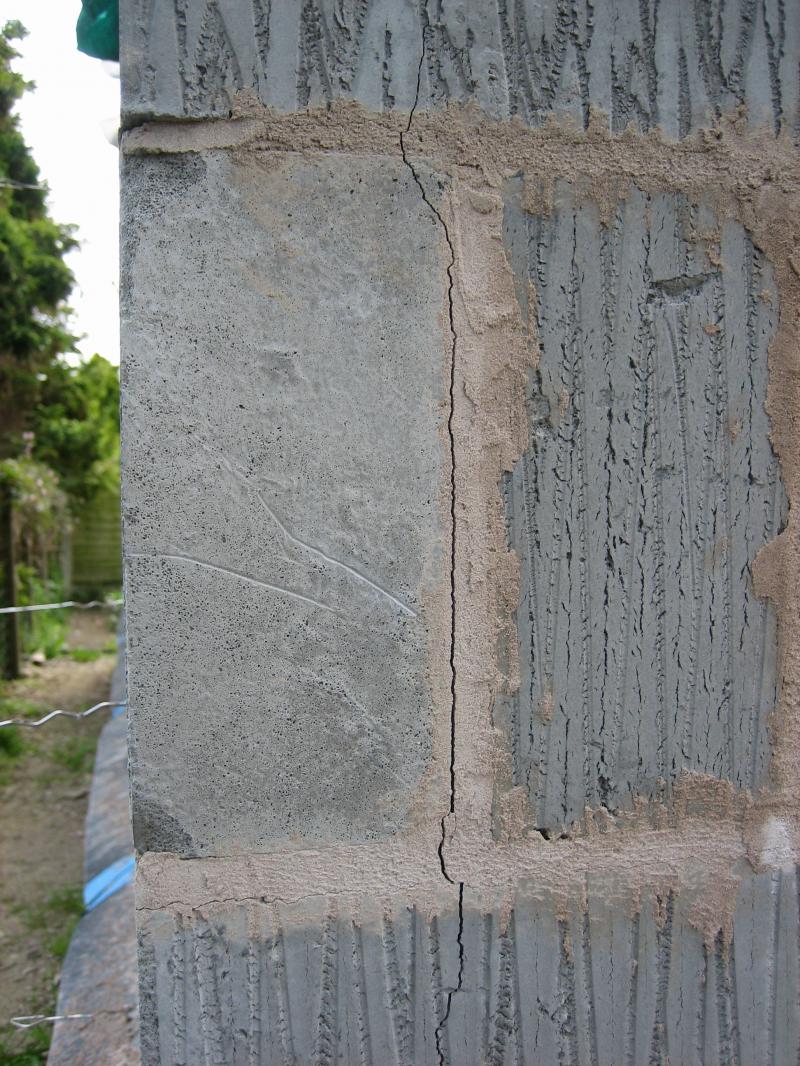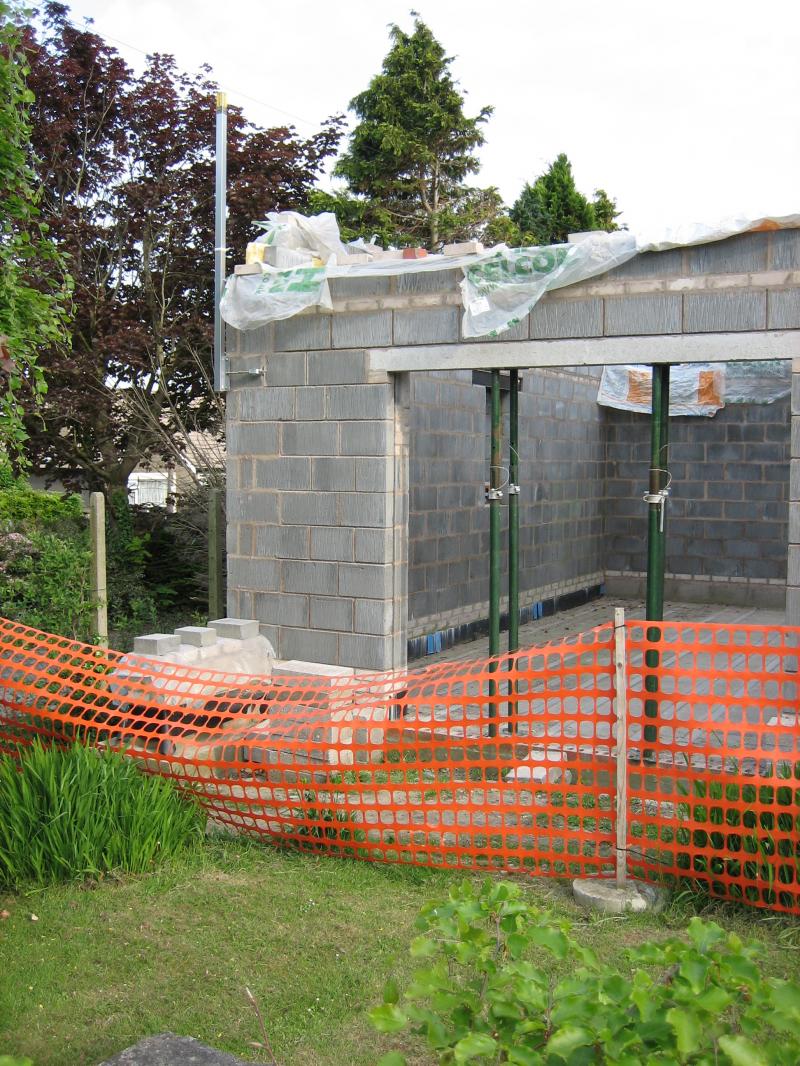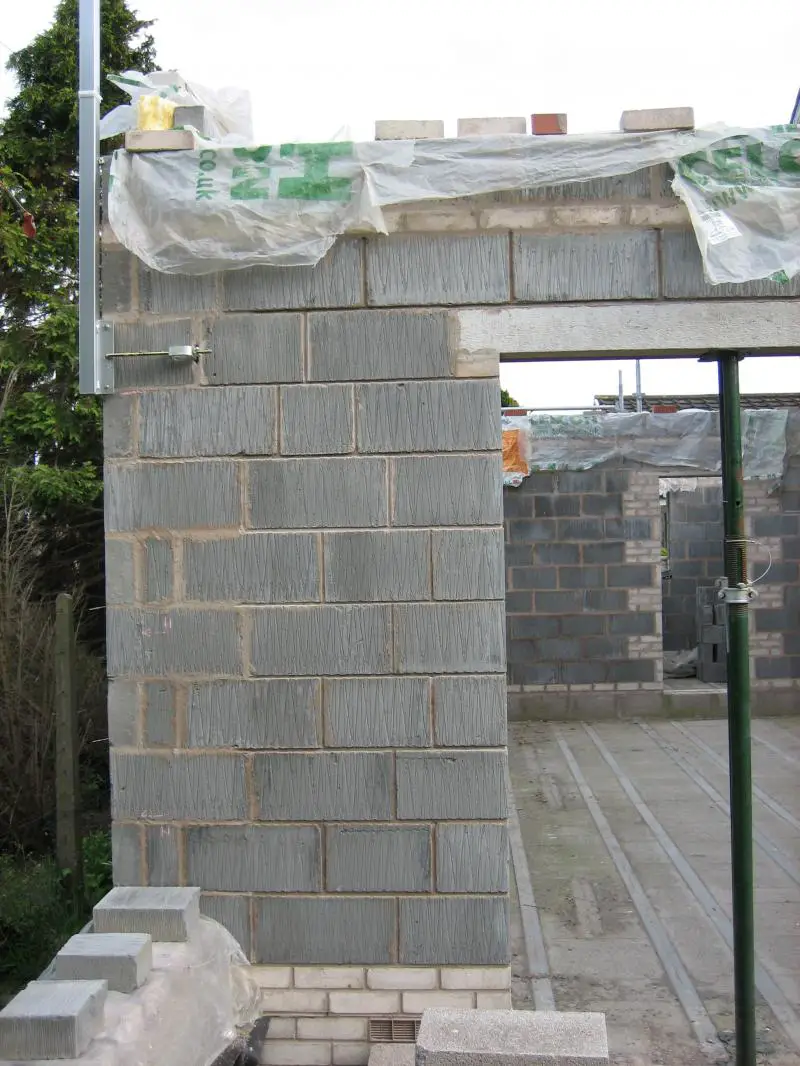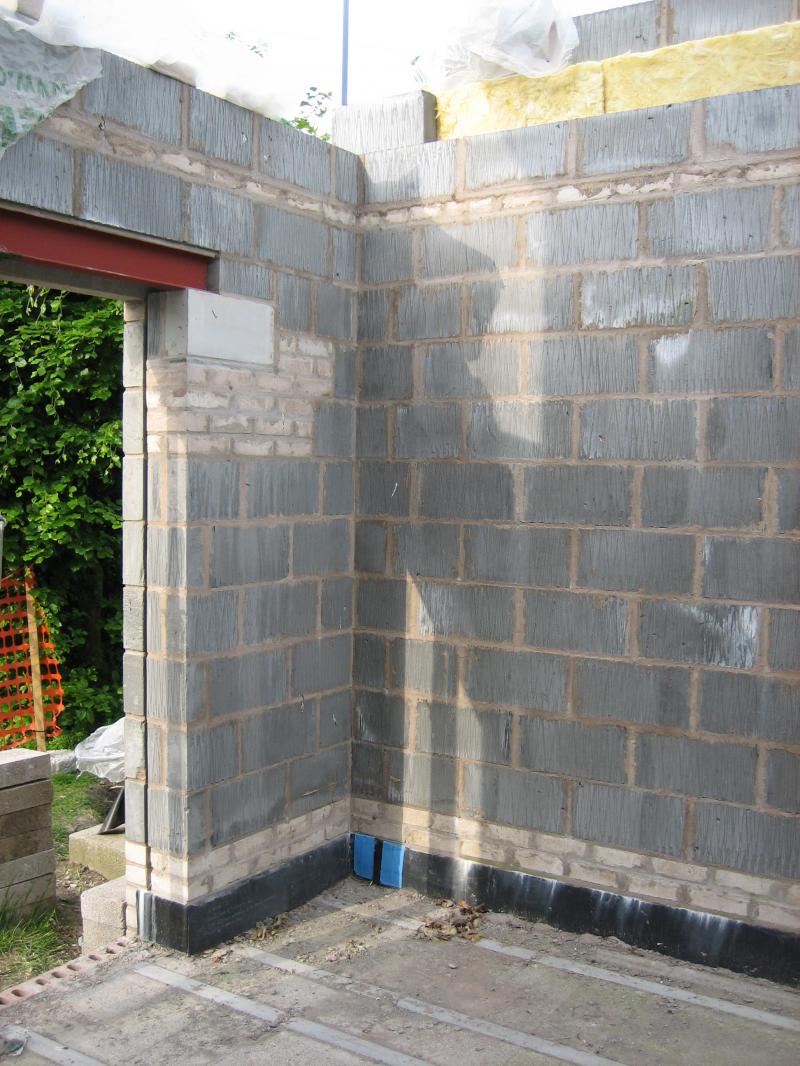I'm building my extension with Celcon standard 3.6N blocks both inside and out with a fully filled 100mm cavity. I'm using stainless steel ties at 450mm centers vertically and 600mm horizontally.
I've read a number of threads about settlement causing aerated blocks to crack. This hasn't been a problem for me - until now!
A crack has appeared on one of the external corners of the extension - see picture below ---
The crack extends upwards for another 3 courses and downwards for another 2 courses but only as a hairline. It stops 2 courses above the DPC and 5 courses below the top of the wall. There aren't any cracks on the inside of this corner or indeed anywhere at all in the inner leaf. There is one more hairline crack in the outer leaf about 4 meters away.
I've carefully followed the SE's spec with the mortar mix and the manufacturer's instructions with the plasticiser. The walls have been laid carefully and are plumb. The bulk of the blockwork has been in place for about 6 months.
Is it inevitable that my walls will crack because of my choice of block and won't this eventually compromise the overall strength of the building?
If this is settlement cracking (and I hope it isn't anything more serious!) will it continue for ever. The external finish will mostly be render, is it likely that it too will continue cracking for years to come?
Has the wall integrity already been compomised and should I be looking to replace the blocks shown in the picture?
Any thoughts would be very welcome. Thanks
I've read a number of threads about settlement causing aerated blocks to crack. This hasn't been a problem for me - until now!
A crack has appeared on one of the external corners of the extension - see picture below ---
The crack extends upwards for another 3 courses and downwards for another 2 courses but only as a hairline. It stops 2 courses above the DPC and 5 courses below the top of the wall. There aren't any cracks on the inside of this corner or indeed anywhere at all in the inner leaf. There is one more hairline crack in the outer leaf about 4 meters away.
I've carefully followed the SE's spec with the mortar mix and the manufacturer's instructions with the plasticiser. The walls have been laid carefully and are plumb. The bulk of the blockwork has been in place for about 6 months.
Is it inevitable that my walls will crack because of my choice of block and won't this eventually compromise the overall strength of the building?
If this is settlement cracking (and I hope it isn't anything more serious!) will it continue for ever. The external finish will mostly be render, is it likely that it too will continue cracking for years to come?
Has the wall integrity already been compomised and should I be looking to replace the blocks shown in the picture?
Any thoughts would be very welcome. Thanks





